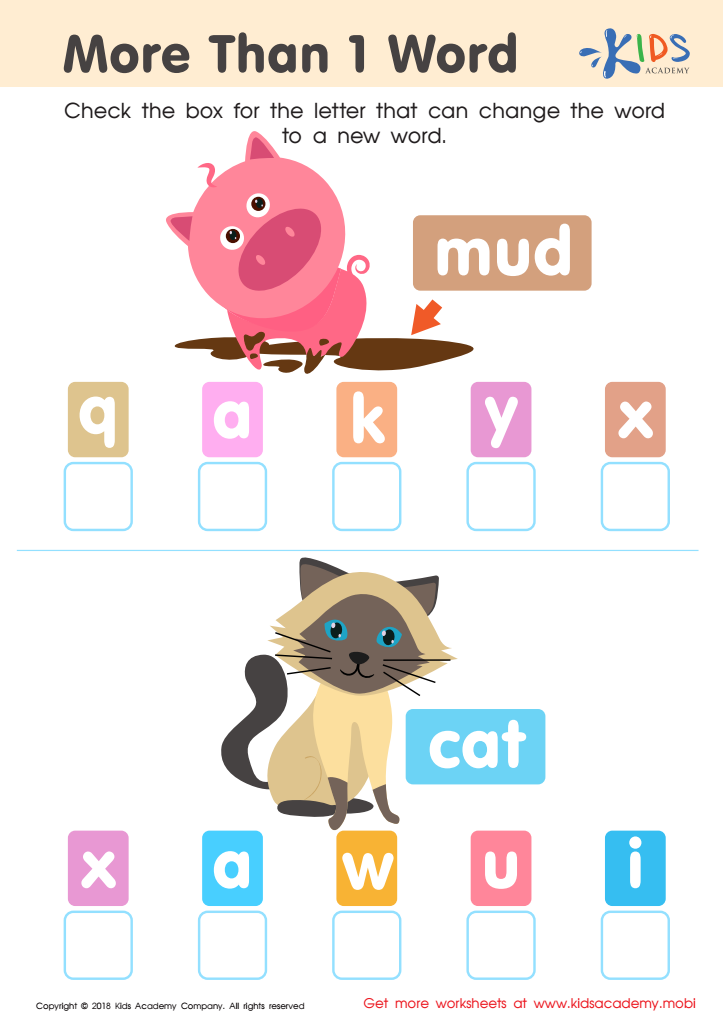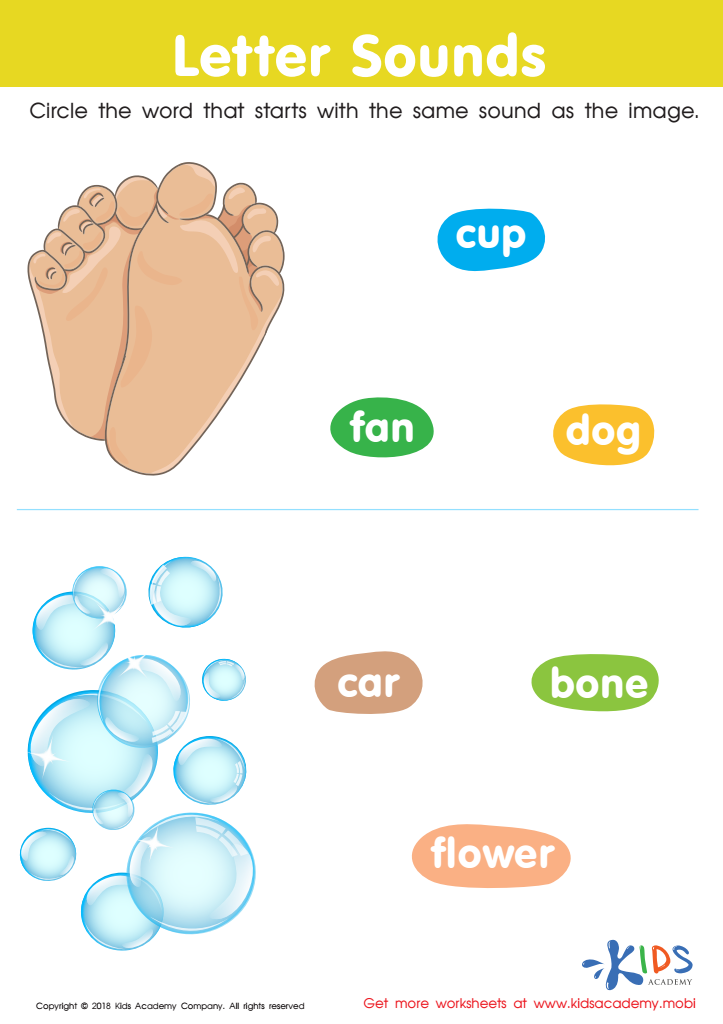Letter Sounds worksheets activities for 4-Year-Olds
2 filtered results
-
From - To


More than 1 word Worksheet


letter sounds Worksheet
Letter Sounds worksheets activities play a crucial role in the foundation of early literacy skills, offering a structured and engaging pathway for children to explore the alphabet and the sounds each letter makes. These activities are not just another task for young learners; they are carefully designed tools that tackle the essential elements of reading and writing, providing a scaffolded approach to understanding the complex relationship between letters and their corresponding sounds.
Firstly, Letter Sounds worksheets activities introduce children to phonemic awareness, which is the ability to hear, identify, and manipulate individual sounds—phonemes—in spoken words. This skill is vital for reading success, as it lays the groundwork for spelling and word recognition. Through targeted worksheets, children can practice and reinforce their understanding of how letters represent sounds, a foundational aspect of phonics instruction.
Moreover, these activities are designed with variety and engagement in mind, ensuring that learning remains a fun and interactive experience. Whether it's matching letters to their sounds, filling in missing letters, or decoding simple words, Letter Sounds worksheets activities cater to different learning styles and paces. This variety not only keeps children engaged but also helps them build confidence as they progress through the activities at their own rate.
Another significant benefit of Letter Sounds worksheets activities is their adaptability. They can be used in a classroom setting, offering teachers a valuable resource for group instruction or individual practice. Similarly, parents can incorporate these worksheets into home learning routines, providing additional support and reinforcement outside of school.
In essence, Letter Sounds worksheets activities serve as a cornerstone in the journey to literacy. They not only make learning about letter sounds explicit and systematic but also ensure that this critical aspect of literacy is accessible, enjoyable, and rewarding for young learners. By engaging with these activities, children are better equipped to navigate the complexities of reading and writing, setting them on a path to becoming confident and capable readers.

 Assign to My Students
Assign to My Students








.jpg)











